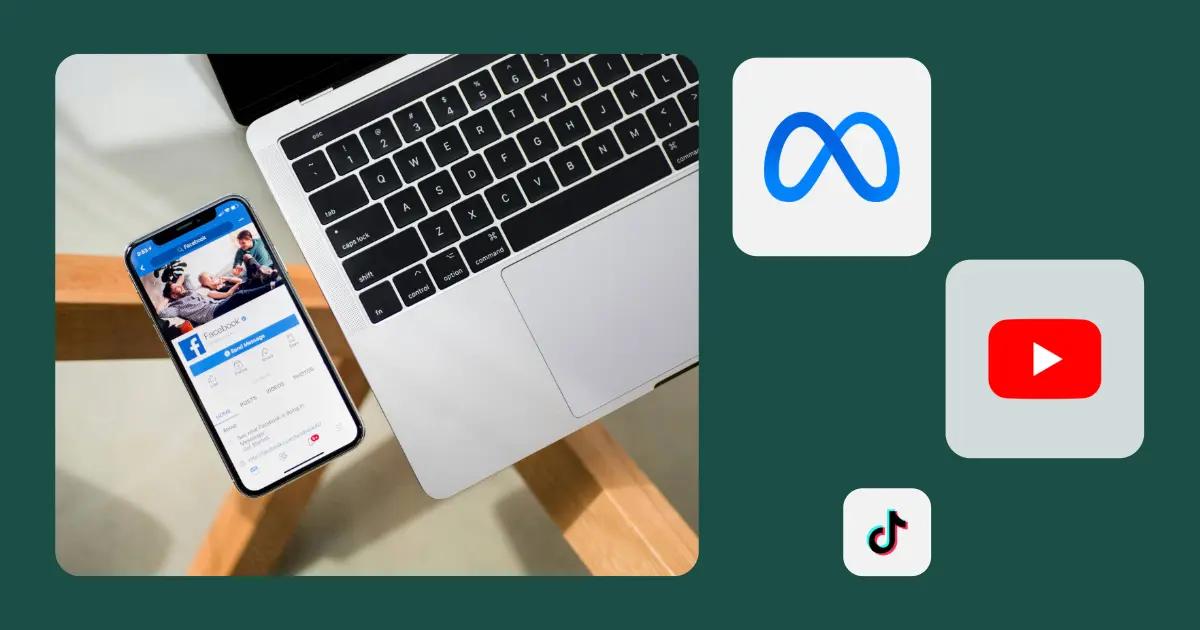With 58% of people with disabilities now using mobile apps, accessibility isn't just a nice-to-have—it's essential.
Our mobile devices have become an important part of our daily lives, handling everything from messaging to managing finances. However, for people with disabilities, mobile app accessibility is crucial, especially with the unique challenges presented by smaller screens, touch navigation, mobile interface designs, and various other potential accessibility gaps when compared to desktop use.
Developers and businesses face an important question: Is the mobile app accessible? To answer the question, we must first understand what mobile accessibility is.
What is mobile accessibility?
Mobile accessibility is not just about making your app usable by people with disabilities. It includes creating a digital experience that considers the different ways people might interact with your app.
This includes support for screen readers that assist visually impaired users, flexibility in text sizing for improved readability, and accommodation of various input methods beyond touch. The approach also considers different ways of perceiving information and ensures functionality across multiple device orientations and screen sizes.
Why does mobile accessibility matter?
Market reach and user base
Making your app accessible expands your potential audience. With around 1.3 billion of the global population having some form of disability, inaccessible apps exclude a substantial potential user base from engaging with your product.
Legal compliance
Digital accessibility is increasingly becoming a legal requirement across many countries. Meeting these standards isn't optional—it's often mandated by law, making accessibility compliance a crucial aspect of app development.
Better user experience for everyone
The benefits of accessibility features extend beyond users with disabilities. Features like clear contrast and readable text enhance the experience for all users, particularly in challenging conditions such as poor lighting or outdoor environments.
Business impact
Accessible apps demonstrate measurable advantages in the marketplace. They typically achieve higher user retention rates and better App Store ratings. These apps also generate increased user satisfaction, require lower support costs, and contribute to a stronger brand reputation.
Understanding your users
Key user groups that require accessible applications include:
Making apps for visual impairments
From color blindness to complete vision loss, these users rely heavily on proper contrast ratios and compatibility with screen readers. Every visual element in your app needs alternative text, while interactive elements must be clearly distinguishable.
Supporting cognitive disabilities
People with conditions like attention deficit disorder (ADD), dyslexia, or Alzheimer's require clear, consistent interfaces. Complex navigation patterns or overwhelming information architecture can create significant barriers for these users.
Designing for hearing impairments
For users with partial or complete hearing loss, all audio content must have subtitles. This includes not just media content, but also audio notifications and alerts.
Accessibility for motor disabilities
Users with limited mobility require interfaces that don't depend on complex gestures or precise movements. Touch targets need to be adequately sized and spaced, with alternatives for multi-touch gestures.

Global accessibility standards and regulations
As mobile apps become increasingly central to daily life, governments and organizations worldwide have established comprehensive frameworks to ensure digital accessibility for all users. Understanding these frameworks is crucial for any organization's mobile apps, as non-compliance can lead to legal consequences and missed business opportunities.
WCAG
Web Content Accessibility Guidelines (WCAG) serve as the technical foundation for most accessibility regulations worldwide. While initially created for websites, these guidelines now extend to mobile applications. Just as for the web, WCAG compliance for mobile apps comes in three levels: A (basic accessibility), AA (commonly required standard), and AAA (highest support level).
European Accessibility Act
The European Accessibility Act (EAA) will be making a significant shift in accessibility requirements, with mandatory compliance coming into effect by June 2025. This directive will standardize accessibility requirements across EU member states, affecting mobile operating systems, e-commerce apps, banking applications, e-books and related software, and transport service applications.
UK Equality Act
The UK's Equality Act takes a broader approach to accessibility, requiring organizations to make their products and services accessible to people with disabilities. For mobile applications, this means ensuring equal access to app functionality, providing reasonable accommodations for disabled users, maintaining consistent accessibility across app updates, and supporting various assistive technologies.
ADA
The Americans with Disabilities Act (ADA) initially focused on physical spaces, the ADA now explicitly covers mobile applications as "places of public accommodation." This interpretation requires mobile apps to provide equal access to users with disabilities, ensuring they can navigate, understand, and interact with all app features effectively.
Gaming accessibility
Mobile gaming has become even more popular over the last few years - mobile games account for 53% of the global gaming market in 2023. Additionally, 20% of casual gamers have some form of disability.
Making games accessible doesn't mean compromising on creativity or challenges. Instead, it means providing options that allow all players to enjoy the gaming experience. This includes customizable controls, adjustable text sizes, colorblind modes, and sound alternatives for important game events.
You might be interested in: What is Accessibility Testing and What Regulations Govern it?
Mobile accessibility checklist
To better understand where your app falls in terms of accessibility, we have put together the core principles your app should follow.
1. Making your content perceivable
Technical color requirements
Implementing proper color contrast is fundamental to accessibility. While specific WCAG compliance levels may vary by location, following WCAG 2.2 AA guidelines ensures strong accessibility standards. For color contrast, WCAG 2.2 AA mandates a contrast ratio of 4.5:1 for regular text (under 24 pixels or 19 pixels bold) and 3:1 for large text (at least 24 pixels or 19 pixels bold). Additionally, non-text elements, such as buttons or form fields, should also meet a 3:1 contrast ratio to maintain visibility.
Visibility management
For single-page applications or card-based interfaces, proper visibility management is crucial. Traditional methods like zero opacity, z-index manipulation, or off-screen placement shouldn't be your only tools for handling visibility. Instead, implement true invisibility for non-visible screens using the HTML hidden attribute or appropriate visibility and display style properties. The aria-hidden attribute should be used sparingly and only when absolutely necessary.
Text and media alternatives
Every non-decorative visual element in your app requires a text equivalent. Images should include descriptive alt text, while interface components need appropriate labels or descriptions. For form controls, explicit labels are mandatory for screen reader compatibility. When dealing with images containing text, consider using actual text with styling instead, as this provides better accessibility and maintainability.
2. Creating an operable interface
Focus management
Every interactive element in your app must be focusable. While standard controls like links, buttons, and form fields handle this automatically, custom controls require additional attention. Assign appropriate ARIA roles to non-standard controls to ensure they're recognized as interactive elements. Focus order should follow a logical pattern that matches the visual layout and maintains consistency across screens.
Touch interaction design
Touch interactions require careful consideration of several factors. When implementing touch events, ensure that core functionality executes on the up-event rather than the down-event. Provide mechanisms to abort actions before completion or undo them afterward. The only exception is when down-event execution is essential for real-time feedback, such as in gaming controls or virtual keyboards.
Target sizing and spacing
Interactive elements must be large enough for comfortable and accurate interaction. Follow established guidelines for touch target sizes, implementing minimum dimensions of 44x44 pixels for all clickable elements. Maintain adequate spacing between interactive elements to prevent accidental activations.
3. Ensuring an understandable design
Document structure
Proper document structure enhances navigation and comprehension. Implement a logical heading hierarchy that doesn't skip levels. Use ARIA landmark roles to clearly define different sections of your app, such as banner, navigation, main content, complementary sections, and footer. This structure helps screen reader users understand and navigate your app's layout effectively.
State management
For custom interactive elements, state changes must be clearly communicated. While standard controls handle this automatically, custom controls require explicit state management. Use appropriate ARIA states to indicate whether elements are checked, disabled, selected, expanded, or pressed. This ensures that users with assistive technologies understand the current state of interactive elements.
Orientation flexibility
Unless absolutely essential for functionality (such as in piano applications or check scanning), your app should support both portrait and landscape orientations. Design layouts that adapt smoothly to orientation changes while maintaining accessibility and usability in either mode.
4. Supporting multiple input methods
Keyboard accessibility
Ensure your app supports keyboard navigation for users who can't use touch screens. Maintain a logical tab order that follows the visual layout, and provide visible focus indicators for all interactive elements. Custom controls should respond to standard keyboard interactions, matching the behavior of native elements.
Alternative input methods
Support various input methods beyond touch and keyboard. This includes voice input where appropriate and compatibility with switch devices. Provide alternative gestures for users who may have difficulty with standard touch interactions, ensuring that all app functionality remains accessible regardless of input method.
Mobile app accessibility testing tools
Choosing the right accessibility testing tools is important for ensuring your mobile app meets accessibility standards. Here's a comparison of popular tools:
| Tool Name | Platform | Price | Key Features | Best For | Limitations |
|---|---|---|---|---|---|
| Accessibility Scanner | Android | Free | Automated testing, visual feedback, suggestions for improvements | Android developers, QA teams | Android only, basic automated checks |
| Accessibility Inspector | iOS | Free with Xcode | Element inspection, navigation verification, color contrast analysis | iOS developers | iOS only, requires Xcode |
| WAVE | Cross-platform | Free / Premium | Visual feedback, error reporting, contrast checker | Web-based mobile apps | Limited native app support |
| Deque Axe | Cross-platform | Premium | Comprehensive testing, CI/CD integration, detailed reports | Enterprise teams | Higher cost, complex setup |
| VoiceOver | iOS | Free | Screen reading, navigation testing, gesture support | Screen reader testing | iOS only, manual testing required |
| TalkBack | Android | Free | Screen reading, navigation gestures, speech feedback | Screen reader testing | Android only, manual testing required |
The bottom line
Creating an accessible mobile app requires a comprehensive testing approach combined with an ongoing commitment to improvement. Start with automated mobile accessibility testing tools to check basic requirements like contrast ratios and missing labels, but don't stop there. Manual testing with screen readers and keyboard navigation provides deeper insights into real-world usability. Most importantly, engage with diverse users, especially those with disabilities, to understand how your app performs with various assistive technologies.
Remember that accessibility isn't just about compliance—it's about creating better products that serve everyone. By implementing these features and maintaining regular testing, your app will reach a broader audience and provide a better experience for all users. The investment in accessibility consistently pays off through increased user satisfaction, broader market reach, and stronger brand reputation. Start your accessibility journey today, and make your app truly work for everyone.




